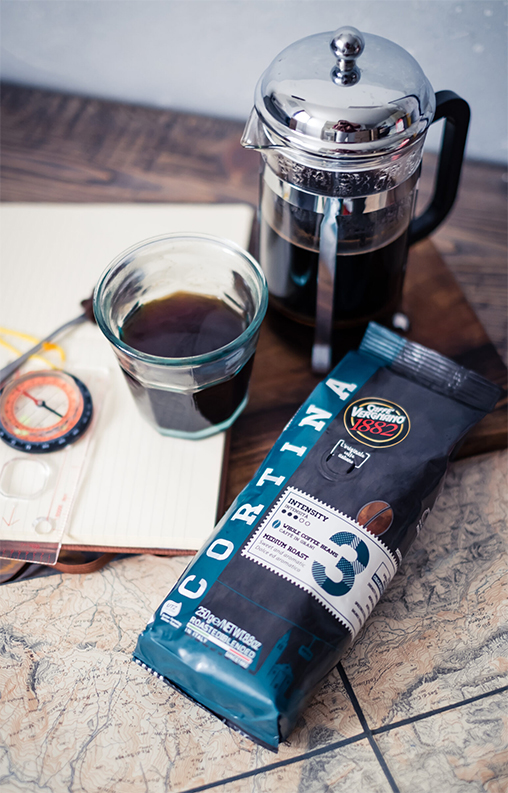What do the names of espresso blends mean?

Names that indicate interesting stories
Anyone who has been involved with the espresso world for a while can not help but notice that, on several occasions, companies seem to lack imagination as to the names of espresso blends. Indeed, an experienced coffee lover will have realized that there are certain words that we come across a little more often than some others in the names of espresso blends. But what does this mean and how can it help us?
The name of an espresso blend is defined in marketing terms: it must be descriptive, auspicious, interesting and give satisfactory information about the product without being tiring, and at the same time easily remain in the memory. In this difficult equation, tried and tested names can often prove to be a good solution: they stay easy on the mind, help us recall past experiences (and therefore describe the product easily and quickly) and are mostly simple, easy and auspicious.
We try to map out some of the most common words we find in espresso blends, emphasizing, of course, that nothing is absolute and that no name automatically implies a specific taste or a particular quality. Good coffee is always important.
Mapping some of the most famous names of espresso blends
 Prestige: The word Prestige is one of the most commonly used words in the description of blends. Without implying anything specific to the taste, texture or aroma of the blend, the word aspires to give prestige to the blend, emphasizing that it is one of the best, possibly, blends of the company. Blends with the word Prestige in their title are rarely 100% Arabica - on the contrary, they are most often characterized by a balance between Arabica and Robusta and are "safe", commercial choices for all tastes.
Prestige: The word Prestige is one of the most commonly used words in the description of blends. Without implying anything specific to the taste, texture or aroma of the blend, the word aspires to give prestige to the blend, emphasizing that it is one of the best, possibly, blends of the company. Blends with the word Prestige in their title are rarely 100% Arabica - on the contrary, they are most often characterized by a balance between Arabica and Robusta and are "safe", commercial choices for all tastes.
Blends to try: Buondi Prestige, Covim Prestige
Gold & Oro: Here things become clear: the gold in the name of the blend, either in English or in Italian, aims to emphasize the quality of the blend, marking it as one of the top of each company. The choice of gold, both in the name and many times in the packaging, is a timeless marketing trick and coffee could not be an exception to this. Although it is extremely difficult to define the taste of a "gold" blend, several times (but certainly not always, since it depends on the policy of each company) this title is given to blends that are composed, in majority or exclusively, of Arabica . It goes without saying, of course, that the same applies to blends called Platinum or Platino.
Blends to try: Molinari Qualita Oro, Lavazza Qualita Oro
Intense & Intenso: Naturally, the word indicates the intensity of the blend, which may be due to the increased presence of Robusta, dark roasting or both. In general, these blends are aimed at those who love strong espresso and intense flavors and promise a strong body and rich cream, while many times they are particularly enjoyable in cold preparations.
Blends to try: Garibaldi Intenso, Illy Intenso
Bar: The word Bar is another word that we find in espresso blends very often, in various variants, such as Gran Bar, Super Bar, Extra Bar and Espresso Bar. The word Bar denotes a blend designed for consumption in the HoReCa industry, without of course excluding its home enjoyment. The range of blends that have the word Bar in their name is so wide that it is impossible to map flavors and aromas, however it is almost certain that we expect a blend that is a mixture of Arabica and Robusta, with a balanced character and quite flexible, that can perform in many preparations (hot, cold, with milk etc)
Blends to try: Portioli Extra Bar, Covim Gran Bar, O’Ccaffe Gran Bar
Names from Italian Cities: These are blends whose characteristics (composition, varieties, roasting, etc.) try, most of the time, to follow the tradition of the Italian city that has baptized them. Thus, blends taking their name from the Italian South (Napoli, Palermo) usually have a darker roast, while those mentioned in the North tend to be lighter. This of course is not the rule, because there are companies that give city names to their blends following purely marketing logic.
Blends to try: Haubrandt Venezia, Vergnano City Line Series
The world of coffee is just magical. Behind a simple name of an espresso blend, perhaps an interesting story is hidden from the evolution and course of coffee!










